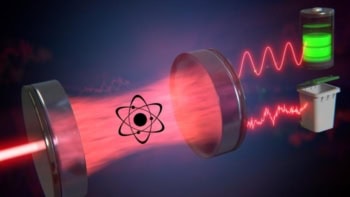The ability to confine electrons within quantum wells has been of both fundamental and technological importance over the past decade. Most of the experiments carried out so far have been restricted to semiconductors. Recently, however, researchers have started to study quantum confinement in metals. One example of this is an explanation of the quantum-well states of electrons confined in thin films of silver in terms of Fabry-Perot modes in an electron interferometer by physicists at the University of Illinois in Urbana (Science 283 1709). Another is the demonstration by researchers at the University of California at Berkeley and the Lawrence Berkeley National Laboratory that a long-wavelength "envelope function" plays a key role in the energetics of quantum-well states in thin layers of copper (Nature 398 132).
Tai Chang Chiang and co-workers at Urbana confined electrons in thin films of silver ranging from 1 monolayer to around 100 monolayers thick. Just as photons resonate back and forth in an optical Fabry-Perot interferometer, the Urbana team showed that electrons bounced back and forth from the two surfaces of the silver film. They used ultraviolet radiation from a synchrotron radiation source to make angle-resolved photoemission measurements of the states. The team were able to follow how the band structure, reflectivity and other properties of the silver varied with the number of monolayers. The Berkeley team also relied on photoemission and used a “double wedge” sample in which a single layer of nickel atoms was able to sample the electron wavefunction at different positions within the copper quantum well.
Applications of the work are likely to be found in the burgeoning field of magnetoelectronics in which devices exploit the spin or magnetic properties of the electron.



